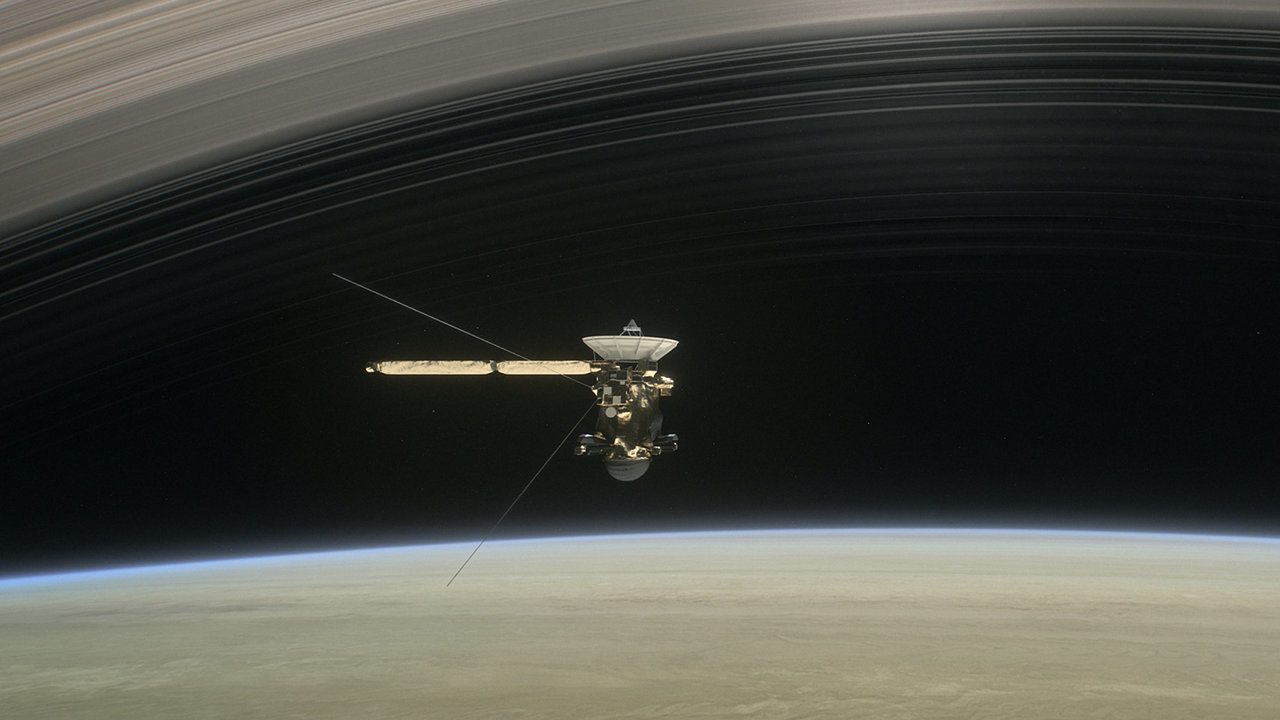
An illustration of the Cassini spacecraft diving between Saturn and its rings in 2017. Credit: NASA/JPL-Caltech
Spacecraft have instruments that help them take pictures and collect information in space. But they need electricity to power those instruments and send the information back to Earth. Where does the power come from?
The answer is that it depends on the mission. To choose the best power system for a spacecraft, engineers have to think about several things. Some factors they consider are: where the spacecraft is traveling, what it plans to do there and how long it will need to work.
One source of power is the Sun.
Energy from the Sun (solar power)
Solar power is energy from the Sun. Spacecraft that orbit Earth, called satellites, are close enough to the Sun that they can often use solar power. These spacecraft have solar panels which convert the Sun's energy into electricity that powers the spacecraft.
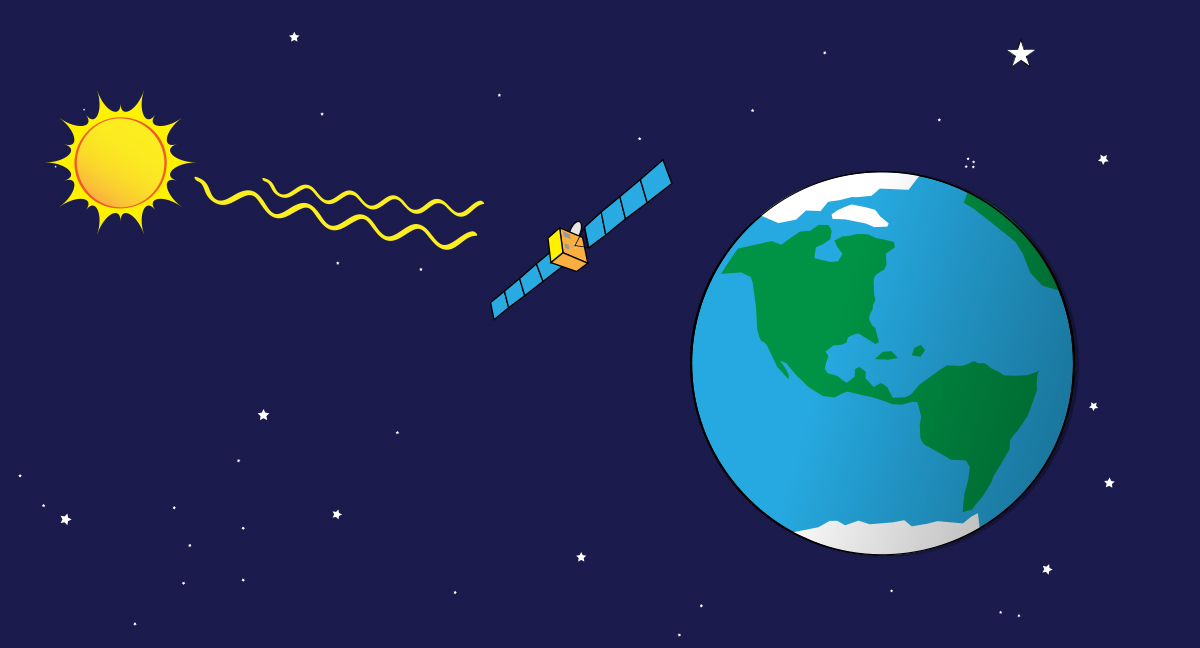
Credit: NASA/JPL-Caltech
The electricity from the solar panels charges a battery in the spacecraft. These batteries can power the spacecraft even when it moves out of direct sunlight.
Solar energy has also been used to power spacecraft on Mars. NASA's Mars Exploration Rovers, Spirit and Opportunity, and Mars’ Phoenix lander all used power from solar panels and so does the InSight lander.
Spacecraft traveling far away from the Sun have very large solar panels to get the electricity they need. For example, NASA's Juno spacecraft uses solar power all the way out at Jupiter, where it orbits the planet. Each of Juno’s three solar arrays is 30 feet (9 meters) long!
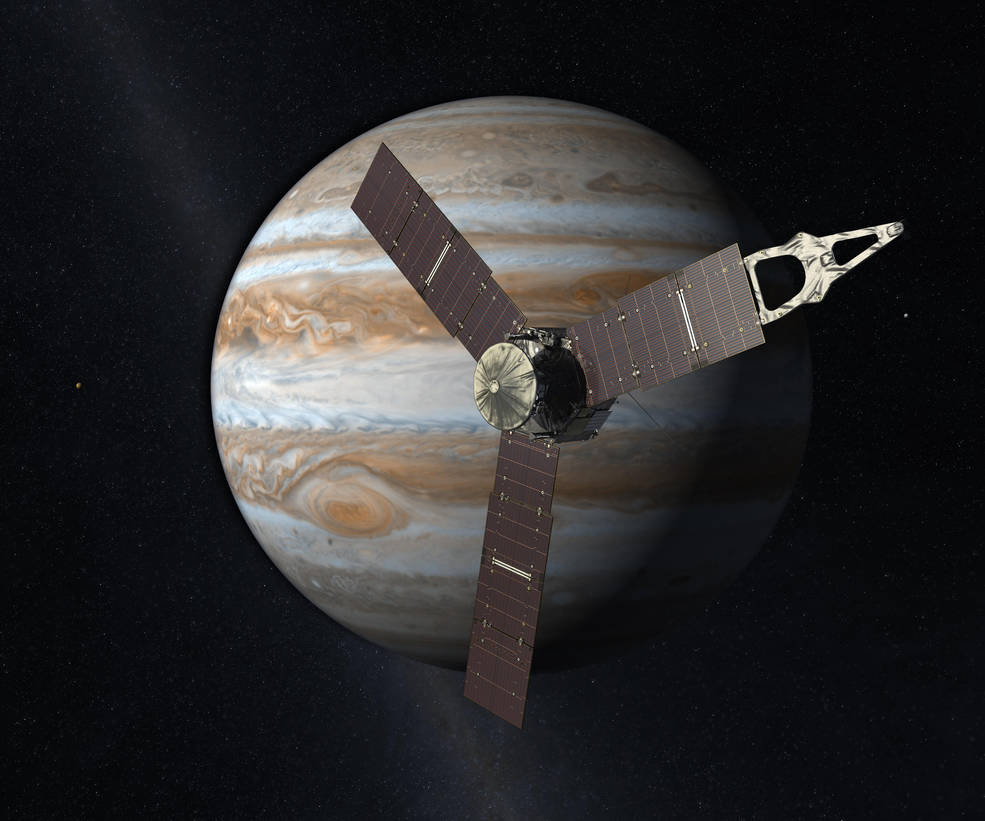
NASA's Juno spacecraft is powered by very large solar arrays. It began orbiting Jupiter in 2016. Credit: NASA/JPL-Caltech
However, solar power doesn’t work for all spacecraft. One reason is that as spacecraft travel farther from the Sun, solar power becomes less efficient. Solar-powered explorers may also be limited by a planet's weather and seasons, and harsh radiation (a type of energy). And they might not be able to explore dark, dusty environments, such as caves on the Moon.
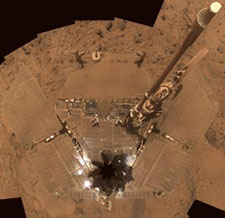
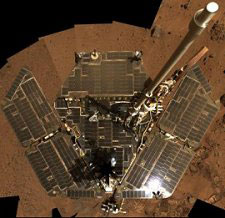
Mars is a dusty, windy place. When dust covers solar panels, they can’t make as much energy for the spacecraft. Use the slider to see the Spirit rover’s solar panels covered in dust (left) and what they looked like after winds cleaned them off (right). Credit: NASA/JPL-Caltech/Cornell
When solar power won’t work, spacecraft have to get their power another way. So, scientists developed other ways that these spacecraft can get power. One way is to simply use batteries that can store power for a spacecraft to use later.
Energy from batteries
Sometimes, missions are designed to last a short amount of time. For example, the Huygens probe that landed on Saturn’s large moon Titan was only meant to work for a few hours. So a battery provided enough power for the lander to do its job.
Spacecraft batteries are designed to be tough. They need to work in extreme environments in space and on the surfaces of other worlds. The batteries also need to be recharged many times. Over time, NASA scientists have invented ways to improve these batteries. Now they can store more energy in smaller sizes and last longer.
Energy from atoms
An atom is a tiny building block of matter. Almost everything we know in the universe is made up of atoms. Atoms have to store a lot of energy to hold themselves together. But, some atoms—called radioisotopes—are unstable and begin to fall apart. As the atoms fall apart, they release energy as heat.
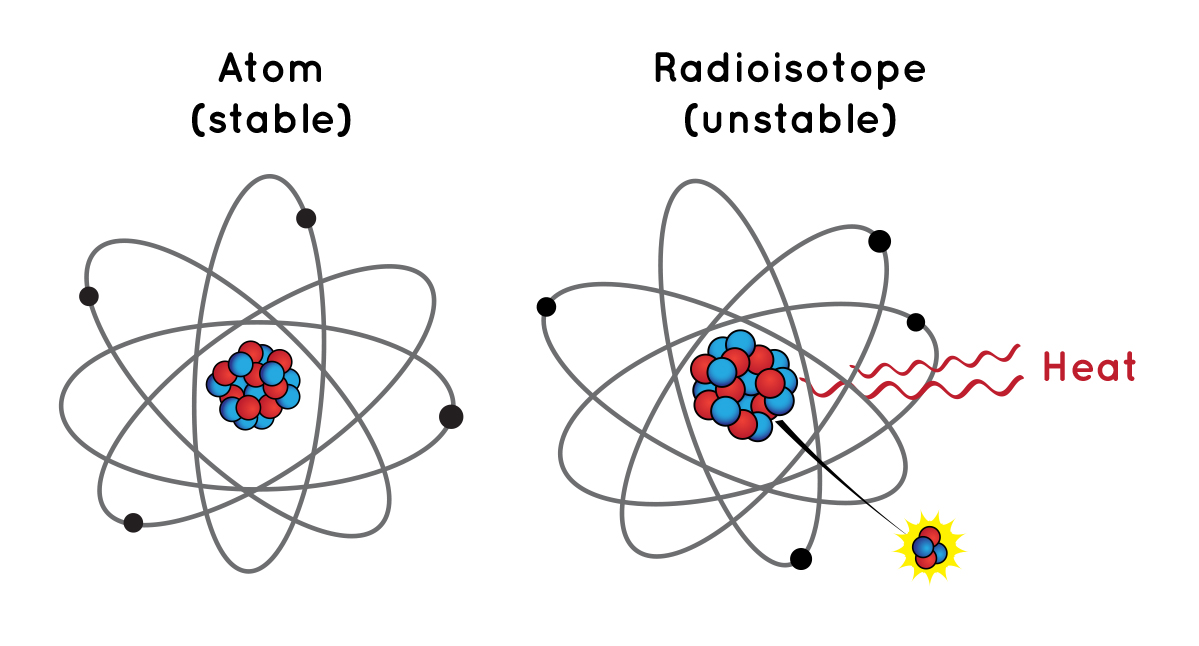
An unstable atom is called a radioisotope. When these unstable atoms fall apart, they release energy as heat. Credit: NASA/JPL-Caltech
A radioisotope power system uses the temperature difference between the heat from the unstable atoms and the cold of space to produce electricity. NASA has used this type of system to power many missions. For example, it has powered missions to Saturn, Pluto and even spacecraft that have traveled to interstellar space. This type of power system also provides the energy for the Curiosity rover on Mars.
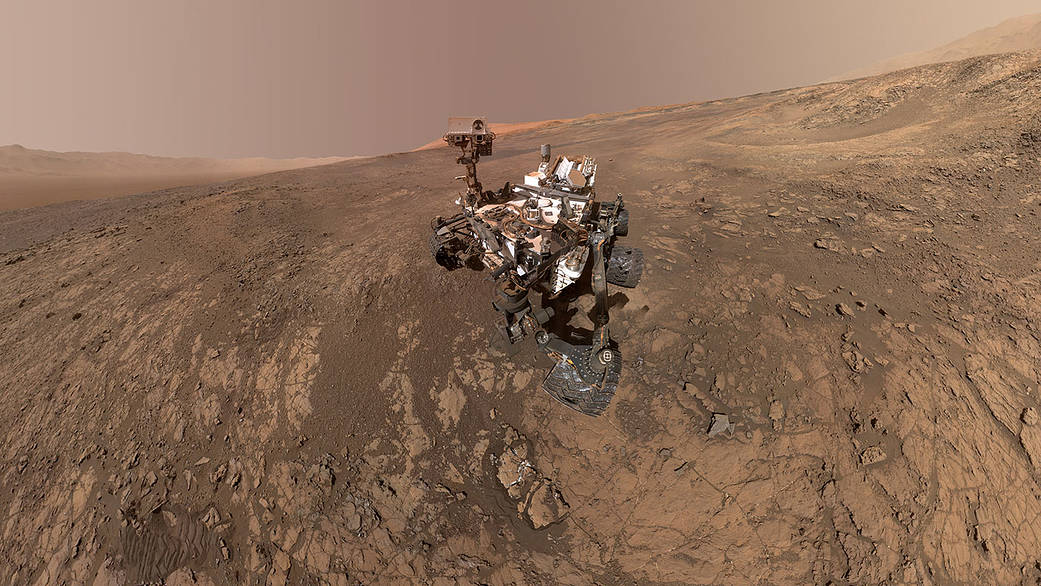
This is a self-portrait of NASA's Curiosity rover on Mars. Curiosity gets its power from a rechargeable lithium-ion battery pack and a radioisotope power system. Credit: NASA/JPL-Caltech/MSSS
Radioisotope systems produce power for a very long time, even in harsh environments. In fact, NASA's two Voyager spacecraft use this type of power. They have traveled farther than any other human-made object and are still sending back information after more than 40 years in space!
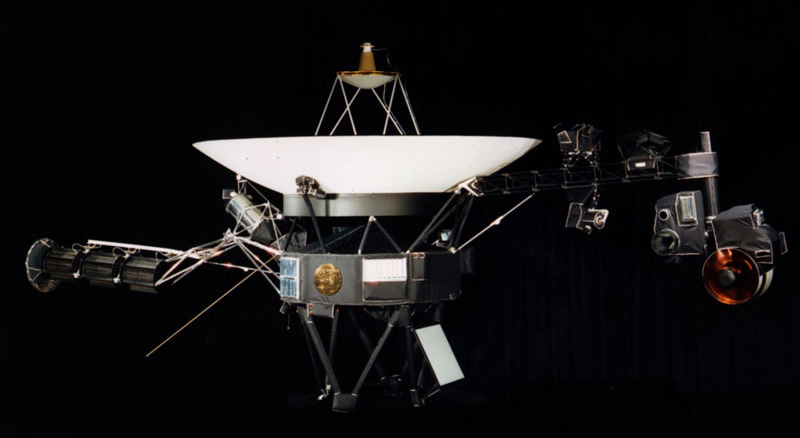
An image of one of NASA's two Voyager spacecraft. Credit: NASA/JPL-Caltech


